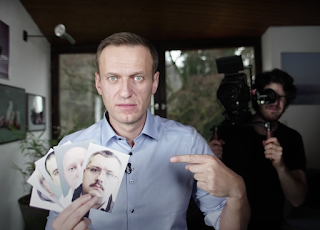 |
| Attila - Taras Berezhansky (c) Opera Australia |
Verdi's Attila is a lavish, large-scale production with strong elements of violence and war. Audiences will find its as much about Italian Nationalism as the vague romance around which much of the plot is constructed. Verdi's work has been described as 'thinly veiled argument for Italy's independence from Austria' and 'an out-and-out rallying cry for an independent, unified Italy' having been written around 1846.
The opera, in three Acts, tells the story of invasion of Roman Italy by Attila the Hun with the current version being moved from 5th Century Italy to fascist Italy of the 1930s. For that reason 'the Huns' look closer to German soldiers or the Gestapo than barbarians. The Italians similarly are portrayed in a manner closer to 20th Century partisans than actual Roman soldiers from that earlier era.
The storyline of the opera in summary:
Odabella, the daughter of the Lord of the now destroyed town of Aquileia, has been captured by Attila's forces however he is impressed by her and gives her his own knife as a keepsake. The Roman general, Ezio seeks an audience with Attila to reach terms but is rebuffed. Meanwhile away from the town, Foresto who is engaged to Odabella is leading the refugees away from the destroyed town and plotting how to regroup. Foresto believes Odabella to be dead but on learning of her survival accuses her of betrayal which she denies and states that she is plotting to kill Attila.
Attila plans to march on Rome but asleep one night, he dreams of being urged not to do so by an old man that he later recognises to be Pope Leo I. Attila therefore instead invites Ezio to a banquet and plans to marry Odabella however Ezio and Foresto are planning to attack Attila. Following the banquet, the Romans attack Attila and Ezio, Foresto and Odebella find Attila whereupon Odebella kills Attila with the knife he had given her.
Opera Australia has brought this opera back on stage after having its initial season cut short by the impact of the COVID-19 pandemic and it's a welcome continuation of the performance. For the Opening Night, many in the audience attended in Black Tie and there was a smattering of A lister opera enthusiasts and Government Ministers including retiring Health Minister, Brad Hazard and NSW Treasurer, Matt Kean. The retiring artistic director of Opera Australia, Lyndon Terracini, sitting in the audience, was given a enthusiastic round of applause for his 13 years with the opera company with Attila being his final production.
At the conclusion of the opera during the curtain call, lead singer Taras Berezhansky, who is Ukrainian, draped the Ukrainian flag around his shoulders and was given a rousing sustained round of applause from the audience.
The cast for Attila were -
Taras Berezhansky as Attila
Natalie Aroyan as Odabella
Diego Torre as Foresto
Michael Honeyman as Ezio (replacing Mario Cassi who was unable to travel to Australia due to illness)
Virgilio Marino as Uldino
Richard Anderson as Pope Leo 1




























